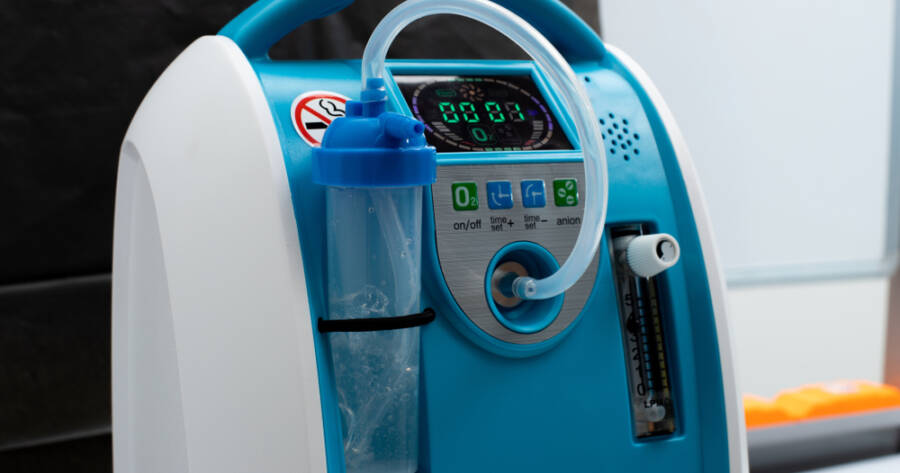Chronic Obstructive Pulmonary Disease (COPD) presents numerous challenges, especially when it comes to managing daily oxygen needs. Oxygen concentrators can significantly enhance life quality for COPD patients by providing reliable oxygen therapy at home and on the go. Navigating the Medicare system to obtain these concentrators, however, requires careful attention to detail. Get to know Medicare options for COPD oxygen concentrators, offering insights for a smoother process.
Understanding COPD and Oxygen Needs
COPD encompasses respiratory conditions, including emphysema and chronic bronchitis, leading to airflow limitation and breathing difficulties. For many with COPD, supplemental oxygen is a necessary treatment to maintain adequate blood oxygen levels, prevent hypoxia, and reduce strain on the heart and lungs. Oxygen concentrators are frequently chosen over tanks for their convenience and consistent oxygen supply.
Oxygen concentrators extract and concentrate oxygen from ambient air, providing a steady flow tailored to patient needs. Portable and home-based models cater to differing mobility requirements, ensuring users can carry out daily activities with ease. Determining the oxygen flow rate prescribed by a healthcare provider is vital in selecting an appropriate concentrator, ensuring effective therapy and improved quality of life.
What Medicare Covers for Oxygen Therapy
Medicare Part B primarily covers outpatient medical services, including durable medical equipment (DME) like oxygen concentrators. For Medicare to cover them, the equipment must be deemed medically necessary by a healthcare provider. Medicare coverage typically includes the rental of oxygen equipment necessary for home use if it meets specific criteria.
Eligibility for coverage requires that a physician confirms a medical need for oxygen therapy. Specific tests, such as blood oxygen level measurements, may be required to document this necessity. Medicare typically covers 80% of the approved costs, with patients responsible for the remaining 20%. Many might consider supplemental insurance to help cover this patient portion.
Navigating Eligibility and Documentation
Securing Medicare coverage necessitates proper documentation, including a prescription and relevant health records. Medical necessity dictates the requirement for oxygen therapy and must be confirmed through testing and a physician’s order. Collaborative discussion with healthcare providers is essential in completing these steps accurately.
Patients should engage in conversations with both their doctor and Medicare-approved suppliers to ensure a coordinated approach. Understanding and meeting all paperwork requirements can prevent delays and facilitate smoother equipment acquisition. Close communication with all parties involved might enhance efficiency and reduce the likelihood of denied claims.
Choosing a Medicare-Approved Supplier
When selecting a supplier, verifying that they are Medicare-approved is imperative. Approved suppliers must comply with Medicare standards, ensuring quality and accountability. Patients should research local and online suppliers, evaluating their reputations and customer service commitments.
Working with reputable suppliers can offer reassurance and support throughout the process. They often provide assistance with paperwork and facilitate ongoing equipment maintenance, ensuring long-term usability. Proactive inquiry into supplier service options and contracts might align with both patient needs and Medicare coverage stipulations.
Exploring Types of Oxygen Concentrators
Oxygen concentrators come in two main types: stationary and portable. Home units are typically larger and designed to be used in a fixed location. These devices provide continuous oxygen flow, tailored to the patient’s prescribed needs. Portable models offer greater mobility, enabling users to maintain active lifestyles with lighter, more compact designs.
The choice between portable and home-based units depends on lifestyle preferences and individual oxygen requirements. Discussing options with healthcare providers informs decision-making, allowing the selection of an optimal device. An understanding of the device’s specifications ensures that it matches the user’s treatment plan and living circumstances.
Understanding Costs and Financing Options
Although Medicare covers a significant portion of the concentrator’s cost, patients must still prepare for potential out-of-pocket expenses. Calculating the total costs, including insurance deductibles and co-pays, provides financial clarity. Additionally, exploring the option of renting versus buying equipment might uncover cost-saving opportunities.
Considering supplemental insurance plans can cover the typical 20% co-insurance not included by Medicare, easing financial burdens. Some suppliers might offer financing plans or payment assistance programs, enhancing affordability. Proper planning and exploration of all available financial avenues are key factors in effectively managing therapy costs.
Learn More Today!
Navigating the Medicare process for securing an oxygen concentrator for COPD management may initially seem complex, but understanding each step simplifies access to essential care. From establishing eligibility through medical documentation to choosing the appropriate device type and supplier, a clear plan ensures better access and affordability.
Engaging with healthcare providers, Medicare, and suppliers alike facilitates smoother coordination, ensuring patients receive the oxygen therapy necessary for improved quality of life. By demystifying Medicare coverage and embracing clear communication, COPD patients can secure optimal respiratory support with less stress and greater confidence.





